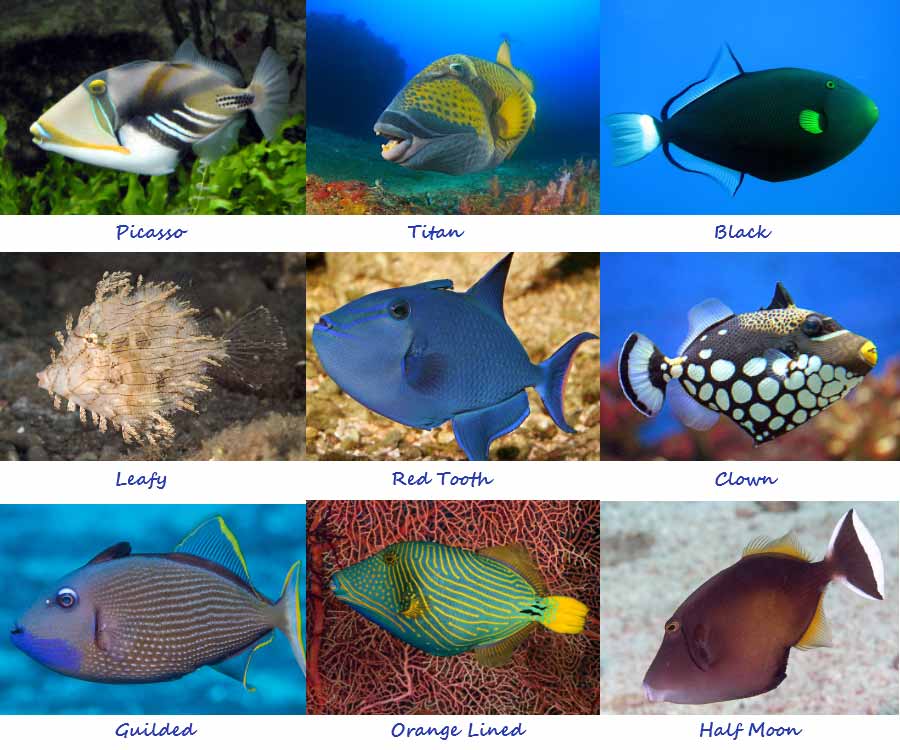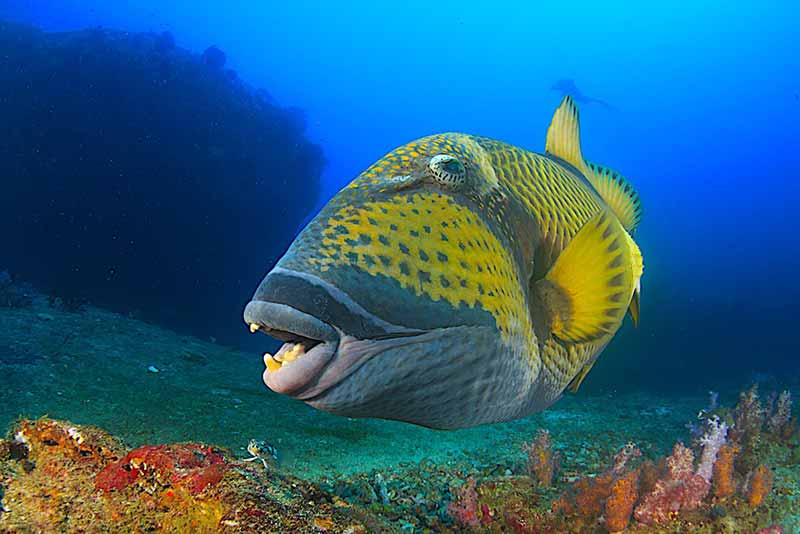It’s the time of the year again on the west side of Thailand, that triggerfish are reproducing and defending their nests. This territorial behaviour makes triggerfish quite “unpopular” with many divers. Taking a closer look however, reveals many fascinating facts about triggerfish.
Many triggerfish species
Triggerfish come in various colours and sizes with over 40 different species scattered around the world’s oceans. From the brightly coloured Clown Triggerfish to the camouflaged Titan Triggerfish, each species boasts unique and intriguing characteristics. The largest species is the Stone Triggerfish that can grow up to 1 meter but most species have a maximum length between 20 and 50 cm.

Feeding
Some smaller triggerfish like the Red Tooth Triggerfish feed on plankton but most have typical diet of slow-moving prey like crabs, worms and sea urchins. The bottom dwelling triggers dig out prey by flapping away debris with their fins and squirting water from their mouths. Their tough teeth that are said to be human like, are used to crush shells. They also take on sea urchins. The triggerfish will use its teeth to gently bite down on one of the spines and lift it off the sea floor and flip it over to get at the urchin’s mouth, that is covered with fewer spines.
Spines
Triggerfish get their name from a set of spines on their back. The first dorsal fin has three spines that can be locked into an erect position for use as predator-defence and as an anchoring device. The first spine is very strong and is connected with the second spine. The second, smaller spine is used to “lock” the main spine in position. When threatened by predators, the triggerfish will dive into a crevice, wedging itself tightly and anchoring into place by erecting and locking the first spine. The erected spines will also discourage predators from trying to swallow the fish and many divers know that triggerfish use their spines to communicate “stay out of my way”!

Nesting
Male triggerfish will create a nest that is normally not much more than a hole in the sand. After courting a female and fertilizing the eggs, the male establishes a territory that is a circle of about 10 meters around the nest. Both the female and male triggerfish will guard the nest from potential predators (including divers), with the female staying closer to the nest and the male forming the first line of defence on the perimeter. The territory is basically ‘cone shaped’ and reaches all the way to the surface. So, to escape the triggerfish it is best to swim horizontally, away from the nest.
Luckily the eggs hatch pretty quick, normally within 48 hours. After hatching, the juveniles leave the nest and head to the surface where they try to find some protection in floating seaweed or they move to or shallow water and find protection there.
Protection
Because of their bright coloration, many species of triggerfish are collected for the aquarium trade. The high prices that are paid for these fish has tempted collectors to gather even rarer species. Some species of triggerfish like the Queen triggerfish, are listed as vulnerable under the IUCN red list, which means that their numbers could decline if habitat continues to degrade or they are overfished.
Keeping triggerfish in aquariums however has revealed that they can grow surprisingly old. Although the average lifespan in the wild is estimated about 8 years, in captivity some triggers have reached 20 years.
